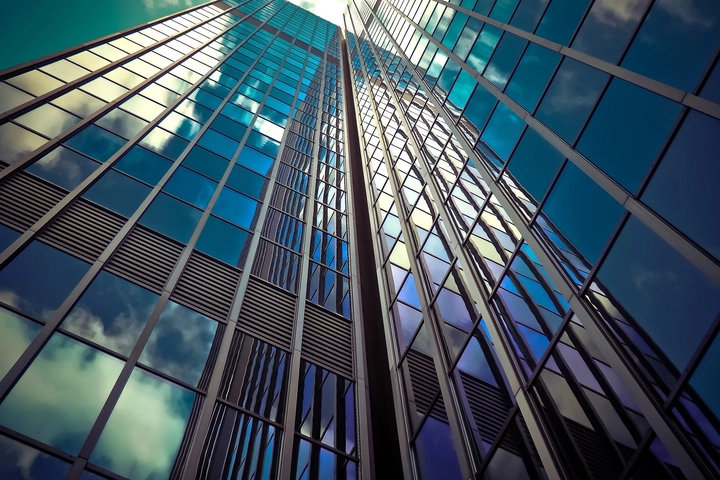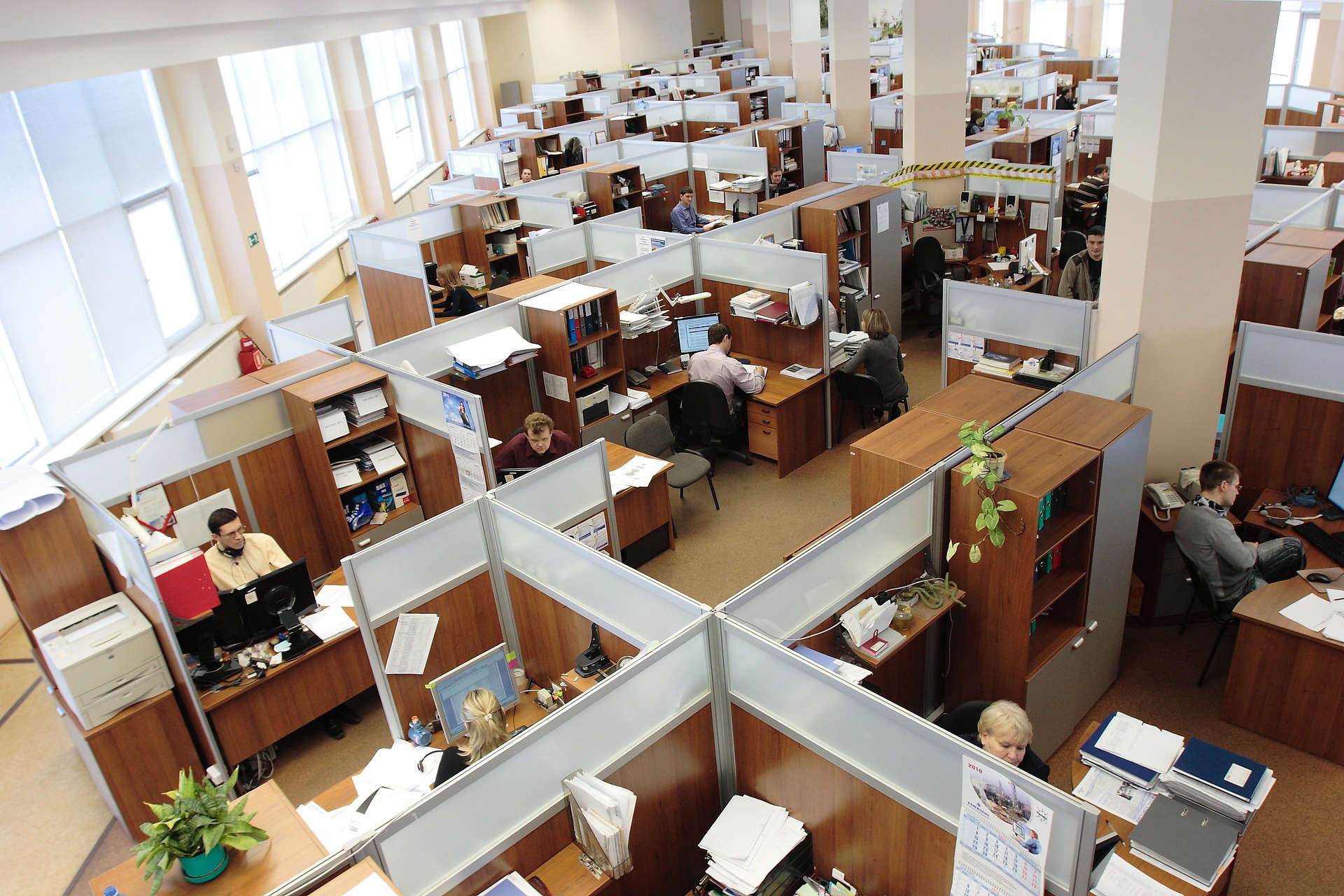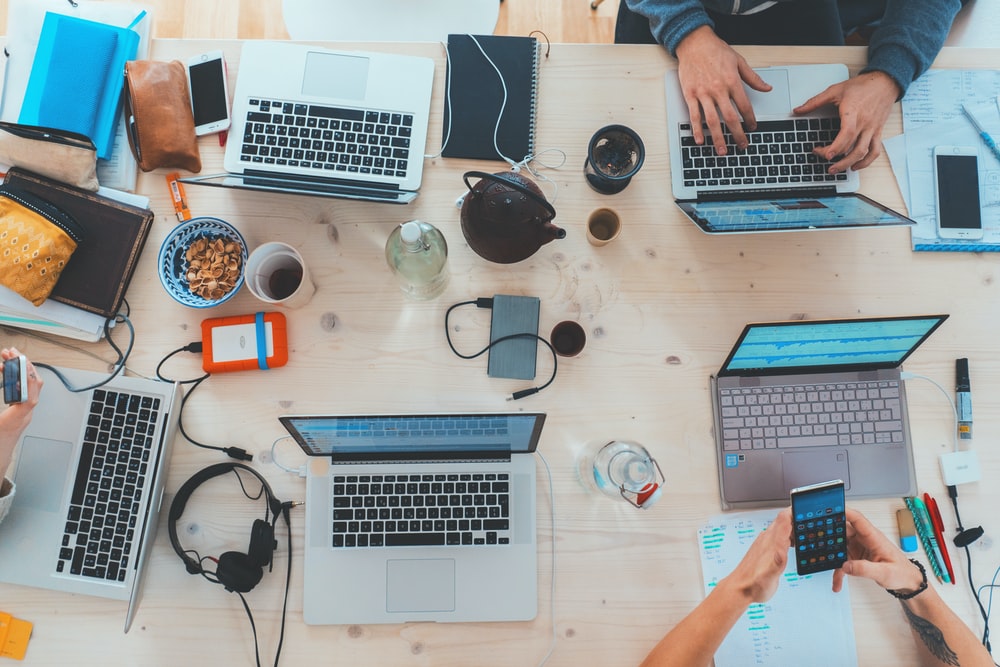
How Do YOU Envision The Office Of The Future?
Fresh perspectives and new ways of working are transforming the workplace. Things that are out – dull, dingy, smoky, unventilated, greying little offices of the past…
Modern offices are double glazed, have sophisticated aircon systems, are well lit, and often well decorated with real plants and fresh paint on the walls.
But that is 2022’s standard… what will 2032 be asking of its offices?
While once it was an environment where tasks were issued and completed under supervision, the office has now become an intentional space where collaboration thrives, driving productivity and innovation. Digital transformation offers smoother and more streamlined ways of working possible. However, enterprises seeking to encourage engagement and teamwork while attracting and retaining top talent will discover that this ambition is realised not by technology but by developing an office of the future.
The Person In The Workplace
Many office-based companies around the world have long been trying to bring humanity back into the workplace – Google famously decks its headquarters out with all manner of things designed to keep workers as cosy as possible. After all, happy worker, happy work. If that’s not a slogan already, we’ll take the credit for it!
Did you know that one Google office has a rooftop swimming pool?!
And that’s nothing – according to the same article from 2013, the Googleplex in California has two swimming pools and 60 snack kitchens! Rooftop pool, you say? That’s so nine years ago!
Google is definitely the trailblazer in the world of modernising the workplace. As we read in this article, the company has filled its 100+ global locations with a serious assortment of perks for its on-site team members.
At the tip of the iceberg, its Colorado HQ has an indoor climbing wall, the New York office has a gym, its Dublin headquarters offers a wellness centre, Zurich has a corkscrew slide, Tokyo boasts an espresso bar, and Singapore has a nap room!
To summarise, the biggest companies on the planet are seriously committing to their employees, and it shows – Google has very impressive employee retention rates.
But when you think about the climbing wall, the espresso bar and the swimming pool, what does it all mean?
It means that Google treat their employees as people first, workers second, and they put the human at the forefront of everything, in order to get the best out of their team.
Advantages and Disadvantages Of Open Offices
Today’s leading modern office interior design experts are quick to recommend the open-plan office in terms of layout. Gone are the days of walled-in offices and cubicles which isolated employees. Open offices help staff feel more connected and help enterprises create a work culture and sense of community. Less confined by physical parameters, team members often work more freely and collaborate easily in an open office.
But according to an article from the Business Insider, open plan offices just aren’t that good for us. They explain that many employees feel easily distracted and under more pressure to ‘perform’ due to the lack of privacy that open offices involve. This won’t come as a surprise to anyone who has spent many a year sat squarely in the centre of the open office plan with the boss breathing down their next.
Open offices came about as an alternative to the individual cubicle (see below). To quote Business Insider, ‘At the time, the idea was that if you broke down physical barriers between workers, it would break down metaphorical ones as well. Employees would be able to easily collaborate on projects and would be enticed to engage in a free-flow of ideas with their next-door neighbor.’
But not many people miss the cubicle, either.
If you’ve ever seen the 90s comedy classic film Office Space, you’ll remember the days of the ubiquitous office cubicle:

Image Source: Pixabay
It’s not that office cubicles no longer exist – they certainly do – but fortunately, times have long since moved on from the cubicle being the “defacto” office design, as we recognised the downsides of walling employees off from all human interaction for eight hours a day.
So is there a happy medium?
Well, a lot of this clash between open plan and cubicles will be mitigated by the rise of flexible and homeworkers – whichever is the least favourite can more easily be endured when it’s only for one day a week as opposed to five.
Additionally, it’s long since become more acceptable to move around the office throughout the working day, maybe popping to the break out room with your laptop or holding team meetings in the cafeteria…

Image Source: Pixabay
Activity-Based Working
Flexibility applies to all sorts of things in the workplace, and a new approach to the way we seat our employees sees employers letting their team members choose their workspace within the office to suit their tasks. This method offers them both freedom and flexibility, resulting in improved performance. Open offices can support this initiative, as can hot desks and clusters set up for temporary teamwork, while screens can be deployed for privacy (almost like a cubicle-lite or mini cubicle!) or when increased focus is required. Tailoring environments to individuals helps managers get the best work from their staff. Ask your team members which they’d prefer, and try to provide as best as you can.
Some staff work well on sofas or beanbags, as opposed to the sturdy office chair. Two years of homeworking, in which many people worked from their living room or even bedroom has meant that a lot of office workers simply aren’t used to the chair and desk anymore and may prefer more comfortable seating arrangements. There’s nothing wrong with that – allow your staff to move about the workspace freely and work where they feel most comfortable.
Technology In The Office
While true digital transformation is focused on technology, for it to work successfully, companies must think about providing their employees with the right type of workspace to use that tech. In modern workplaces, many daily or otherwise recurring tasks are now automated or digitalised to improve efficiency, save time, and create smooth experiences for inter-colleague and client communications.
As smartphones become bigger and more capable, more and more people rely on them for work – whilst having to put up with a vastly shortened battery life. Should all offices provide wireless charging stations for iPhones and Samsung phones, and in the meantime, do away with the last remaining modem cables that they bought in 2006?
Maybe computer-based workplaces will also begin to take seriously the latest findings in the dangers of too much screentime, particularly on employees’ eyesight and posture, and find workarounds that allow their team members to get their jobs done without overdoing it at the screen. Will future offices invest in health-promoting, screen-free spaces for breaks, meetings, brainstorming, and so on?
Flexible working tools like video chat solutions, data sharing platforms and cloud computing are all mainstays of the modern office, but companies must create well-designed work areas for staff to interact with them efficiently. Instead of the dated approach of using impersonal conference rooms with a screen mounted on the end wall, forward-thinking firms are creating smaller hubs where digital assets can easily be accessed, and closer collaboration achieved. For example, now that we’re firmly in the days of Zoom, could offices of the future build ‘Zoom hubs’, spots in the office that face windows or other good sources of daylight, come equipped with ring lights to enhance video quality, and are soundproofed from the chit chat and phones ringing across the rest of the office?
Experts In The Office Of Tomorrow
The sky is the limit in terms of redesigning the office for the future and the new generations. Gen Z are beginning to enter the workplace now, and on average, they’re often found to have much higher standards for workplaces and be less willing to settle.
However, if there’s one thing that we think will rise to the top in the workplace of the future, it’ll be a rejection of the robot worker, and a recognition of the human behind the employee. Companies will become more health-focused by incorporating more features to enhance mental and physical wellbeing, combating the tiring nature of the screen-dominated world, building workspaces that work for both the introvert and the extrovert, cutting down on the number of team members in the building at a time by embracing the benefits of hybrid working, and encouraging employees to take more breaks and get fresh air and as much daylight as possible.
In the meantime, we recommend investing in well-designed chairs that provide back and arm support, paint your office in bright colours that reflect natural light across the room, and encourage employees to take breaks from the screen regularly, an old-school piece of advice from the 80s and 90s that seems to have got a bit lost in recent times.
If you seek ultra-modern office interior design for your workplace, we can help. At Saracen Interiors, we are committed to offering the best corporate office designs for our clients, to ensure they keep capitalising on today’s workplace trends. Contact us now for a contemporary office design to suit your needs.
Image Source: Pixabay

